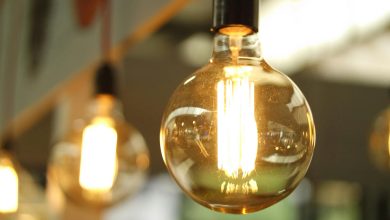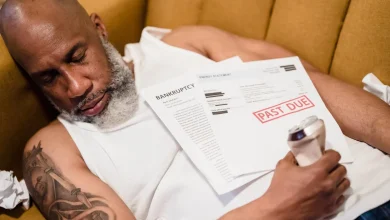How to Make Your Home More Energy-Efficient in 2025 (Beginner’s Guide)
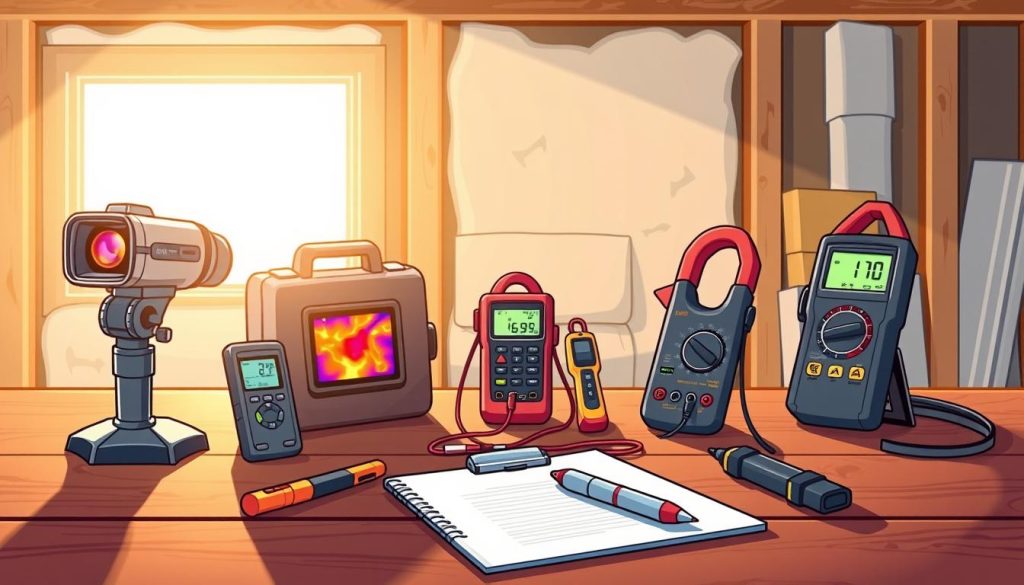
Learning energy-efficient home tips can save you money and help the planet. This guide shows you easy ways to make your home more efficient in 2025. You’ll find out how to cut down on energy waste and make your home cozy while saving money.
Starting with a home energy audit is key. It spots where energy is wasted. The guide teaches you how to do it yourself or find a pro. This helps you know where to start and see improvements fast.
Lowering your utility bills is possible with a few changes. The guide talks about smart tech and insulation. You’ll learn about quick fixes and long-term solutions. It shows how to save money and help the environment at the same time.
Understanding Home Energy Efficiency and Its Benefits
Creating an energy-efficient home starts with understanding its core principles. Energy efficiency benefits go beyond saving money—they shape a sustainable lifestyle. Let’s explore what makes a home efficient and why it’s important.
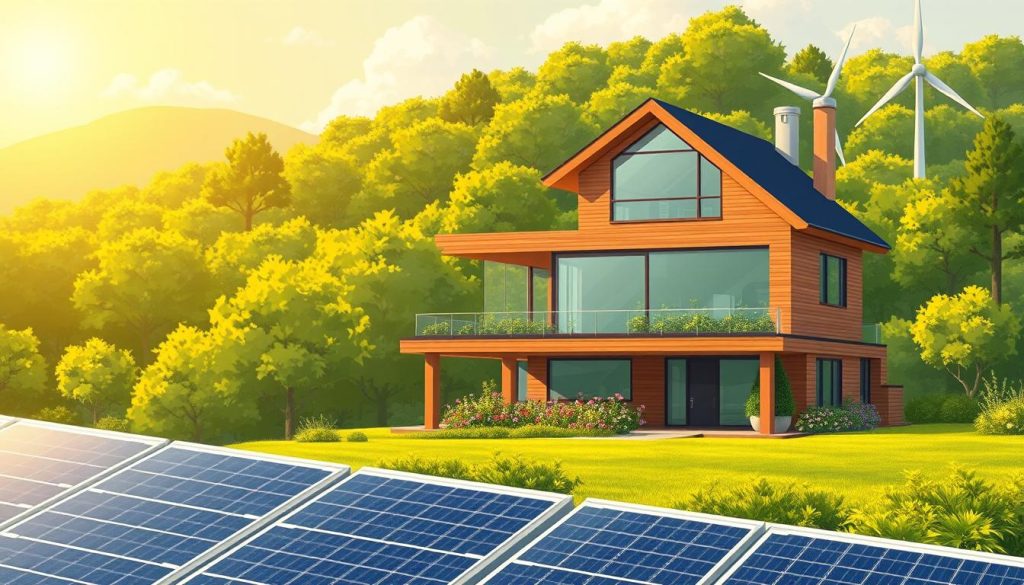
What Makes a Home Energy-Efficient
- Proper insulation in walls and attics traps heat, reducing heating/cooling demands.
- High-efficiency HVAC systems like Lennox or Carrier models optimize energy use.
- Smart thermostats (e.g., Nest) automate temperature control, cutting waste.
- Solar panels or Energy Star-certified appliances lower reliance on nonrenewable energy.
Financial Benefits of Energy Efficiency
Switching to how to make home energy-efficient practices can slash utility bills by 10-30% annually. Upgrading to Energy Star windows or LED lighting often pays for itself in 2-5 years. Plus, eco-friendly home improvements boost resale value by up to $10,000. Federal tax credits for solar panels (26% in 2025) and state rebates for insulation further offset costs.
Environmental Impact of Energy-Efficient Homes
Every efficient upgrade reduces greenhouse gas emissions. For example, switching to LED bulbs cuts 1,300 pounds of CO2 yearly. Eco-friendly home choices also conserve water and raw materials. The EPA estimates that widespread adoption could prevent 200 million metric tons of CO2 annually—equivalent to planting 500 million trees.
How to Make Your Home Energy-Efficient: Where to Begin
Starting your energy efficiency journey doesn’t need a big change. Look for energy efficiency starting points that fit your budget and goals. First, find out where your home loses energy.
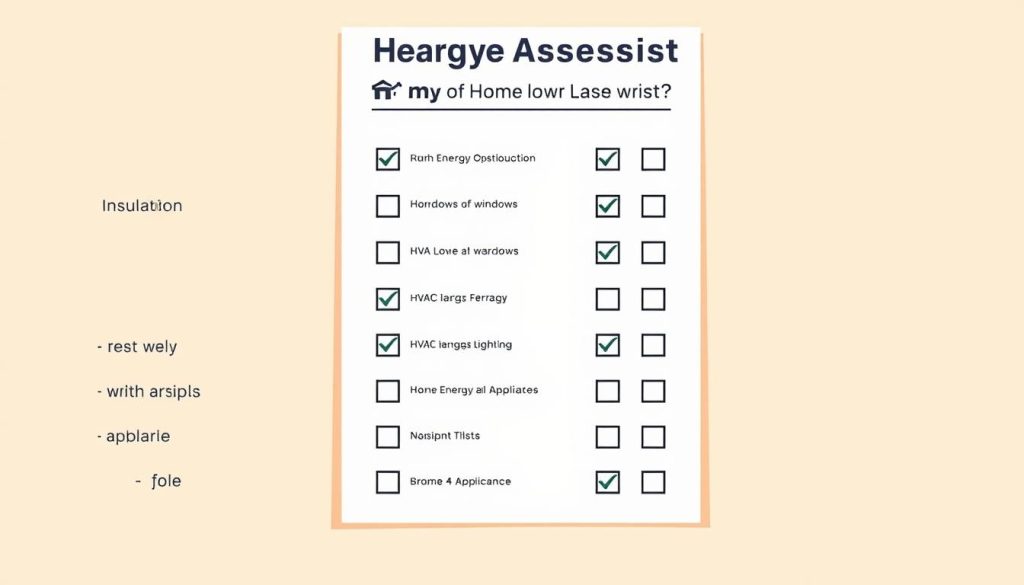
- Conduct a home energy assessment. Use free online tools like the U.S. Department of Energy’s guide or hire a certified auditor. This shows leaks, old appliances, and other waste.
- Fix the easy stuff first. Energy-saving home upgrades like sealing drafts, using LEDs, or unplugging devices save money fast. These steps are cheap but effective.
- Plan for bigger projects. Upgrades like insulation, smart thermostats, or new windows take time but save more in the long run. Choose based on your audit and local climate.
Where you live affects your energy needs. In colder areas, focus on heating. In sunnier places, work on cooling and shading. Look for state programs like Energy Star or local rebates to save money.
Start small and build up. Small changes now prepare for bigger ones later. Your next step? Learn how to check your home’s energy use next.
Assessing Your Current Energy Usage
Before you upgrade your home, get a clear view of where energy is wasted. Start with three key steps: a DIY energy audit, analyzing your utility bills, and finding hidden energy drains. Let’s dive into each step to find where you can save.
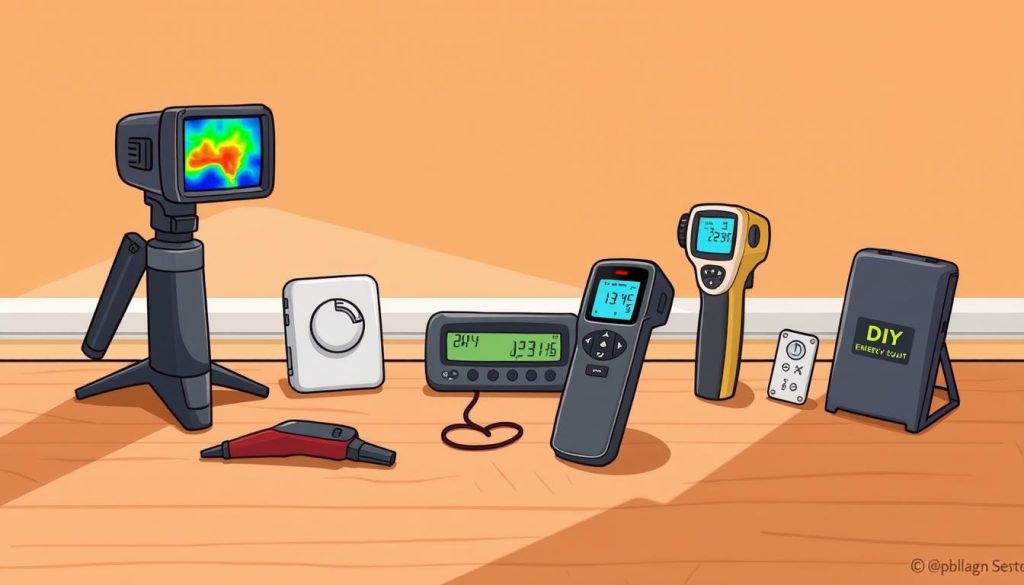
Conducting a DIY Home Energy Audit
Start by visually checking your home:
- Check attic and wall insulation levels. Use a ruler to measure thickness—most homes need 12+ inches.
- Test for air leaks around windows, doors, and outlets with a lit incense stick. Smoke moving sideways shows drafts.
- Inspect HVAC filters and vents for dust buildup. Replace filters every 90 days.
Use free tools like a digital thermometer to measure temperature differences between rooms. The U.S. Department of Energy suggests keeping main living areas at 68°F in winter.
Understanding Your Utility Bills
Utility bill analysis shows patterns. Compare monthly kWh usage over 12 months using this format:
| Month | Usage (kWh) | Cost | Key Factors |
|---|---|---|---|
| January | 1,200 | $150 | Heating peak |
| July | 950 | $120 | Average AC use |
| October | 700 | $85 | Post-summer savings |
Compare your usage to regional averages via your utility company’s website or the EIA database.
Identifying Energy Vampires
Unplugged devices still use power. Top offenders include:
- Game consoles (20 watts standby)
- Set-top boxes (25 watts 24/7)
- Phone chargers (0.25 watts even when unplugged)
Use a kill-a-watt meter to measure phantom loads. Unplug devices or use smart power strips to cut standby power.
Quick and Affordable Energy-Efficient Upgrades
Start with quick energy fixes to save money and feel more comfortable. These low-cost energy improvements are easy to install and make a big difference. Begin today and learn how to make your home energy-efficient without spending a lot.
- Weatherstripping: Seal leaks around windows and doors with 3M Draft Stopper Kits ($10–$20). Saves 20% on HVAC costs. Easy DIY installation.
- Window Film: Apply EnergyGuard Insulating Window Film ($15–$30) to reduce heat transfer and lower AC use.
- Outlet Gaskets: Plug leaks with foam inserts ($5–$10). Fits most outlets to block drafts.
- Low-Flow Fixtures: Replace showerheads and aerators. Delta Faucet low-flow options ($10–$25 each. Cuts water heating costs by 30%.
- LED Bulbs: Swap incandescent bulbs for Philips Hue or Cree LEDs ($2–$5 per bulb. Last longer and use 75% less energy.
- Smart Power Strips: Plug electronics into Belkin Conserve Smart Strips ($20–$40. Cuts standby power waste by up to 25%.
These upgrades take under two hours and cost under $100. Track savings with your next utility bill to see results. Start small and build momentum toward a more efficient home.
Smart Home Technology for Energy Conservation
Modern smart home systems make it easy to save energy without losing comfort. They work quietly, adjusting to your habits and lowering your bills. Let’s look at how smart upgrades like thermostats and lights can make your home more efficient.
Smart Thermostats and HVAC Controls
Smart thermostats learn your habits and preferences. The Nest Learning Thermostat and ecobee SmartThermostat adjust the temperature when you leave, saving 10-15% on heating and cooling. Honeywell’s Lyric T6 Pro works with most US HVAC systems and can be controlled with Alexa or Google Home.
It takes 1-2 hours to install and needs basic wiring checks.
Energy Monitoring Systems
- The Sense Home Energy Monitor tracks your energy use in real-time, showing which devices are wasting power.
- Smart plugs, like TP-Link Kasa, let you turn devices off when not in use, saving energy.
- These systems give you a dashboard to see how much you’re saving, helping you track your progress.
Automated Lighting Solutions
Replace old bulbs with Philips Hue or LIFX smart LEDs. Add motion sensors to turn lights on only when you need them. Set timers so lights dim at dawn or brighten as you enter a room.
These smart features can cut lighting costs by up to 30% each year.
Major Energy-Saving Home Improvements
Ready to save energy for good? Big upgrades can make your home more efficient. These major home efficiency upgrades cost more upfront but save money and make your home more comfortable.
Insulation and Weatherproofing
Improving insulation is key. Look at options like fiberglass, cellulose, or spray foam. Pick based on your area’s climate. Sealing leaks in attics, basements, and crawl spaces also helps.
Costs vary from $1,000 to $8,000. You can see savings in 3-10 years.
Window and Door Upgrades
New windows and doors cut down on drafts and energy loss. Look for low U-factors and SHGC. Double-pane windows cost $400-$800 each, while triple-pane start at $1,000.
Weatherstripping or low-e films are cheaper ways to improve.
HVAC System Efficiency
New HVAC systems improve comfort and save money. Choose AC units with SEER ratings ≥16 and furnaces with AFUE ≥90. Zoned systems and regular maintenance also help.
A new HVAC system costs $5,000-$15,000. It can cut heating bills by 20-30%.
Renewable Energy Options
Solar panels are a great energy-efficient home tips for saving money long-term. Systems cost $18,000-$28,000 but get a 30% federal tax credit. Make sure your roof is right for solar panels before installing.
Leases and power purchase agreements let you go solar without paying upfront.
Seasonal Energy Efficiency Tips
Changing your habits and home settings with the seasons can save a lot of energy and money. Start with these summer winter energy tips that fit your area’s weather.
In winter, turn ceiling fans clockwise to keep warm air down. Lower your thermostat by 7-10°F at night to save 10% on heating. Clean your furnace filters every month and seal drafty windows with weatherstripping. Open south-facing curtains during the day to let winter sun warm your rooms.
Summer needs smart cooling strategies. Set your AC to 78°F or higher; each degree lower uses 6-8% more energy. Close blinds during the hottest sun hours and use awnings to block heat. Switch ceiling fans counterclockwise to feel cooler. Consider a programmable thermostat for easy adjustments.
Spring and fall are times for transition. Open windows on mild days for fresh air. Check your attic insulation and HVAC systems before the busy seasons. Replace HVAC filters every three months to keep things running smoothly.
A seasonal maintenance checklist helps you stay on track:
- Winter prep: Insulate pipes, check chimney
- Summer prep: Clean gutters, test AC
- Year-round: Seal leaks with caulk or foam
People in the Southeast should focus on controlling humidity with dehumidifiers. Homes in the Southwest need extra attic ventilation to handle dry heat. Make sure your energy-saving home upgrades match your local weather for the best results.
Energy-Efficient Appliances and Electronics
Upgrading your appliances and electronics is a key step in how to make home energy-efficient. Modern energy-efficient appliances and smart settings can cut energy use without sacrificing performance. Start by prioritizing products with ENERGY STAR ratings to ensure maximum savings.
Kitchen Appliance Efficiency Guide
Look for refrigerators and dishwashers with the ENERGY STAR label. LG and Whirlpool models often lead in energy savings. The EnergyGuide label on appliances shows annual energy costs—lower numbers mean better efficiency.
Set your fridge to 37°F and freezer to 0°F. Run dishwashers fully loaded and use eco-cycles to save water and energy.
Laundry Room Energy Savings
Front-loading washers use 40% less energy than top-load models. Samsung and GE offer heat-pump dryers, which reuse heated air to reduce electricity. Wash clothes in cold water and line-dry when possible.
Replace old washers if they’re over 10 years old—they use 40% more energy than newer models.
Electronics and Entertainment Systems
TVs and gaming consoles can waste energy even when off. Enable power-saving modes on Sony TVs and Apple devices. Use smart power strips to cut standby power.
Unplug chargers and turn off game consoles when not in use. ENERGY STAR-rated monitors and laptops cut electricity by 15-30%.
Financial Incentives for Energy-Efficient Homes
Federal and state governments have programs to help with energy-saving upgrades. The Inflation Reduction Act offers tax credits for things like solar panels or heat pumps. Many states also have rebate programs for items like insulation or energy-efficient windows.
Check what’s available in your area:
- Utility companies often provide rebates for smart thermostats or LED lighting.
- Energy Star certified appliances may qualify for tax breaks.
- PACE financing lets you pay for upgrades through property taxes.
Use incentives together to save more. For example, combining a federal tax credit with a local rebate on new HVAC systems can cut costs by 30–50%. Visit DSIRE.org to explore state-specific options or use EnergyStar.gov’s rebate finder.
Don’t miss deadlines—many rebate programs have annual limits. You’ll need to show proof like receipts or certification labels. Start by checking your home’s energy use to pick the best upgrades. These tools make smart, affordable choices for homeowners.
Building Sustainable Energy Habits
Small changes in daily routines can make a big difference in energy use. Start with these tips to make your home more energy-efficient. This will help you save energy for the long term.
- Set thermostats 1-2 degrees lower in winter, 1-2 higher in summer when away.
- Run full loads for dishwashers and washing machines, using cold water when possible.
- Switch to LED bulbs and turn off lights in unoccupied rooms.
Teaching Your Household About Energy Efficiency
Involve everyone by:
- Hosting weekly family meetings to share energy-saving habits like unplugging idle devices.
- Assigning age-appropriate tasks: kids can monitor lights, teens can track appliance usage.
- Use gamification tools like EnergyPoints apps to reward progress.
Tracking and Celebrating Progress
Monitor results with:
- Monthly bill comparisons to spot trends.
- Free tools like Google Home’s energy reports.
- Reinvest savings into home upgrades or family rewards like a green-themed outing.
Consistency builds habits. Small choices like drying clothes outside or adjusting streaming device settings add up. Let every family member’s actions fuel your home’s energy transformation.
Conclusion
Making your home energy-efficient saves money and helps the planet. Start with audits and smart tech like Nest or Ecobee thermostats. Every step, from sealing leaks to using LED bulbs, adds up to long-term savings.
These changes cut your bills and carbon footprint. They support living sustainably at home.
Average U.S. homes use 20-30% less energy after these changes. Adding insulation or using Energy Star appliances can save up to 15% on heating. These upgrades also increase your home’s value and keep it cozy all year.
Start today with a simple action. Check your bills, use a smart monitor like Sense, or add weatherstripping. Small steps make a big difference. Use U.S. Department of Energy guides for tax breaks or local rebates.
Remember, energy efficiency is a journey. Focus on what fits your budget and lifestyle.
Join millions of Americans who’ve cut their energy use. Start small, learn as you go, and watch your savings grow. Your home and the planet’s future depend on today’s choices. Pick one tip this week and begin your journey to lasting change.
